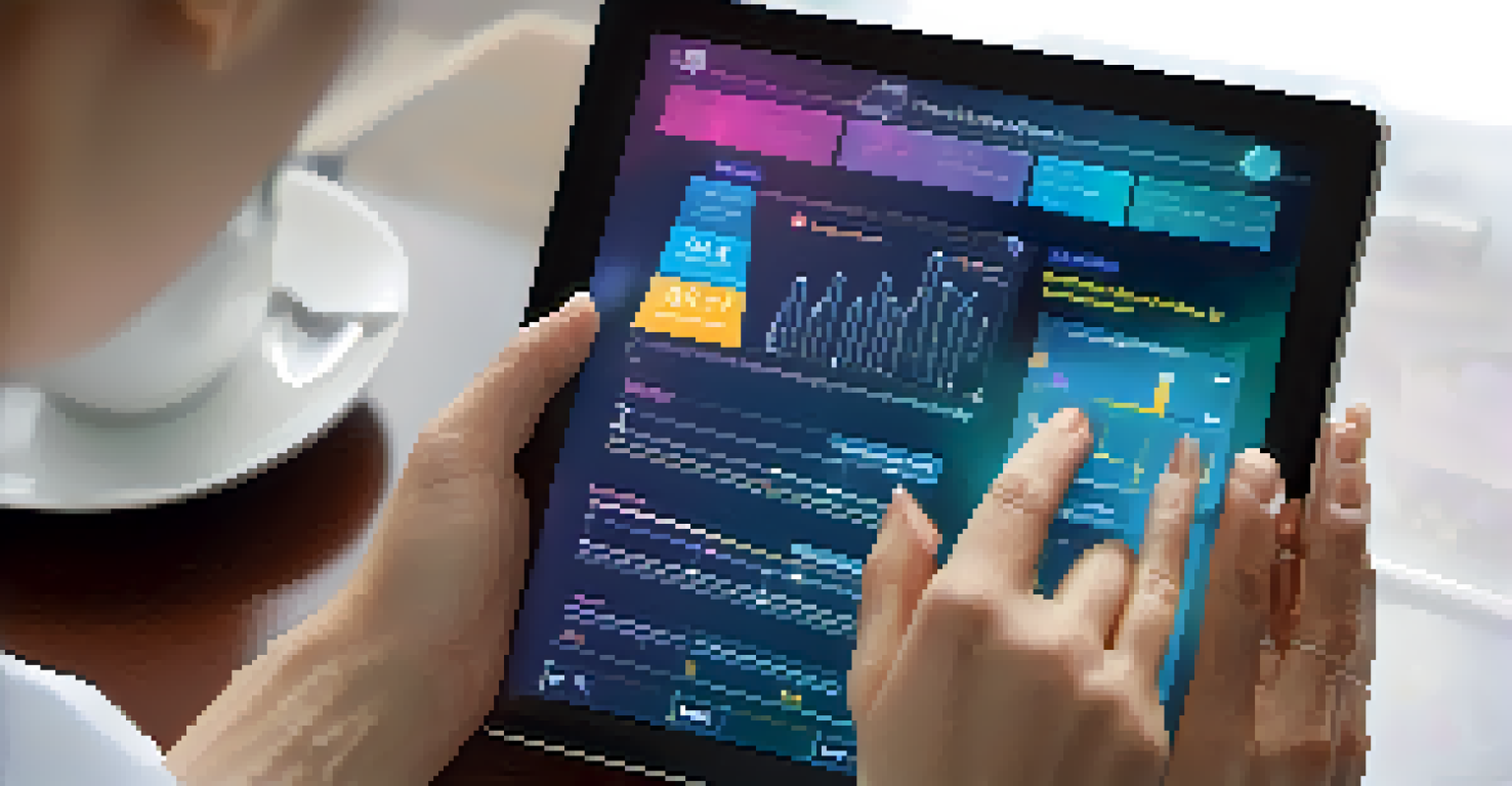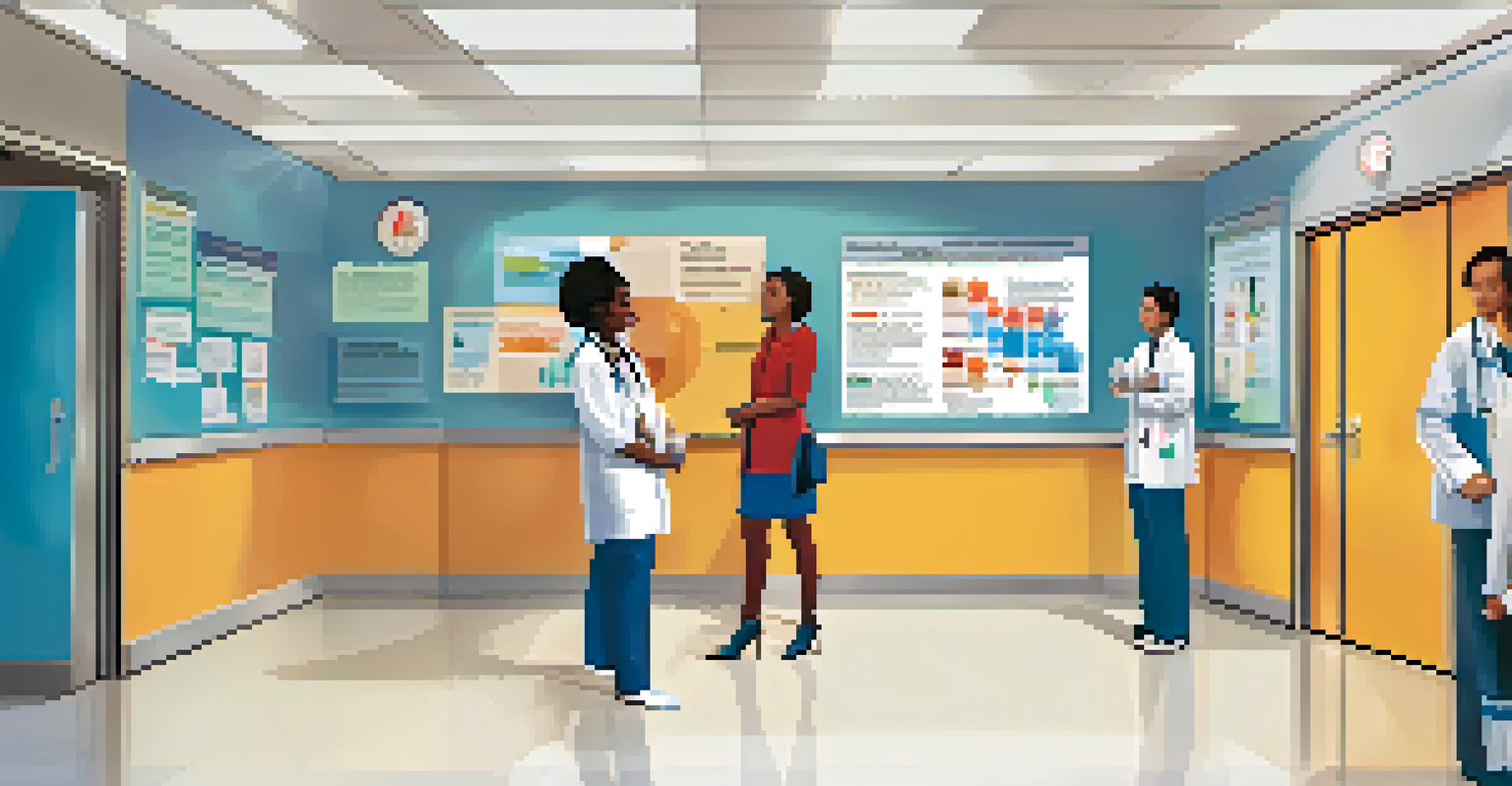Using Visual Aids to Improve Health Information Delivery

Understanding the Role of Visual Aids in Health Communication
Visual aids play a crucial role in health communication by making complex information more accessible. They help bridge the gap between medical jargon and patient understanding, which is vital for effective care. For instance, a simple infographic can convey a patient’s treatment plan more clearly than a lengthy report.
A picture is worth a thousand words.
By using images, charts, and diagrams, healthcare providers can highlight key points and reduce the cognitive load on patients. This is particularly important in environments where time is limited, and patients may feel overwhelmed. Visual aids transform dense information into digestible pieces, making it easier for patients to grasp vital health messages.
Moreover, these tools cater to various learning styles. While some individuals may prefer reading text, others might find visual representations more impactful. By incorporating a mix of both, healthcare providers can engage a broader audience and ensure that everyone leaves with a clearer understanding of their health.
Types of Visual Aids Used in Health Settings
There are several types of visual aids commonly used in healthcare, each serving a unique purpose. Infographics, for instance, can summarize information in a visually appealing way, often using icons and colors to highlight important data. Flowcharts can illustrate processes, like treatment pathways, guiding patients through their options step by step.

Posters are another popular choice, especially in clinics and hospitals, where they can provide quick reference points for patients. These often cover topics like hygiene practices or vaccination schedules, serving as constant reminders in a busy environment. Additionally, videos can be particularly effective, allowing patients to see procedures or exercises in action, enhancing their understanding and comfort.
Visual Aids Enhance Patient Understanding
Visual aids simplify complex health information, making it easier for patients to grasp and remember important details.
Lastly, digital tools such as apps and interactive websites are gaining traction. These platforms not only provide information but also engage patients in their health journey through quizzes and personalized visuals. By embracing technology, healthcare providers can deliver more dynamic and tailored health information.
Benefits of Visual Aids for Patient Understanding
One of the primary benefits of visual aids is their ability to enhance patient understanding. When patients can visualize their health information, they are more likely to remember it. For example, a diagram showing the anatomy of the heart can make it easier for a patient to understand their condition and the necessity of a specific treatment.
The more you can make your ideas visual, the more you can connect with your audience.
Visual aids also promote patient engagement. When patients are actively involved in their health decisions, they tend to be more compliant with treatment plans. Imagine a scenario where a patient can view a video explaining their medication; this not only informs them but also empowers them to ask questions and seek clarifications.
Furthermore, these tools can reduce anxiety. For many patients, the healthcare environment can be intimidating. Visual aids can demystify processes and procedures, making patients feel more at ease. A colorful infographic outlining what to expect during a procedure can significantly alleviate fears and uncertainties.
Challenges in Implementing Visual Aids in Healthcare
Despite their many advantages, implementing visual aids in healthcare can come with challenges. One major hurdle is ensuring that the content is culturally appropriate and accessible to diverse populations. For example, certain images or symbols might not resonate with everyone, leading to misunderstandings.
Another challenge is the potential for information overload. While it’s essential to provide clear visuals, too many details can overwhelm patients instead of helping them. Striking the right balance between informative and concise is key to effective communication.
Diverse Visual Tools Improve Engagement
Using a variety of visual aids, such as infographics and videos, caters to different learning styles and fosters greater patient involvement in their health.
Additionally, not all healthcare providers may have the training or resources to develop effective visual aids. This can lead to inconsistencies in the quality of materials provided. Investing in training and resources is crucial to ensure that all patients receive high-quality information.
Best Practices for Creating Effective Visual Aids
Creating effective visual aids requires a thoughtful approach. First and foremost, it's essential to know your audience. Tailoring visuals to the specific demographics of patients, including age, education level, and cultural background, ensures that the information resonates. For instance, using simple language and familiar symbols can significantly enhance understanding.
Clarity is another critical factor. The design should be clean and uncluttered, allowing patients to focus on the main message. Utilizing contrasting colors and legible fonts can help highlight important information without overwhelming the viewer. Remember, less is often more when it comes to effective visual communication.
Finally, incorporating feedback from patients can greatly improve visual aids. Engaging patients in the design process helps identify what works and what doesn’t, leading to more effective materials. This collaborative approach not only improves the quality of visuals but also fosters trust and rapport between providers and patients.
Integrating Visual Aids into Patient Education Programs
Integrating visual aids into patient education programs can significantly enhance learning outcomes. When designing these programs, it’s important to weave visual elements throughout the curriculum, rather than using them as an afterthought. For instance, incorporating visuals in presentations, handouts, and even discussions can create a more cohesive learning experience.
Moreover, interactive workshops that allow patients to create their own visual aids can be beneficial. This hands-on approach not only reinforces learning but also encourages patients to take ownership of their health journey. By empowering them to visualize their health information, you foster a sense of agency.
Challenges in Effective Implementation
Despite their benefits, creating effective visual aids can be hindered by issues such as cultural appropriateness and information overload.
Additionally, combining visual aids with digital tools, such as mobile apps or online resources, can take patient education to the next level. This hybrid approach caters to various learning styles and preferences, ensuring that all patients have access to the information they need in a format that suits them best.
The Future of Visual Aids in Health Communication
As technology continues to evolve, the future of visual aids in health communication looks promising. With the rise of augmented reality (AR) and virtual reality (VR), healthcare providers can create immersive experiences that enhance patient understanding. Imagine a patient being able to visualize a 3D model of their heart condition in real-time; this can revolutionize how we approach health education.
Furthermore, data visualization tools are becoming more sophisticated, allowing for real-time updates and personalized information. Patients can receive tailored visuals that reflect their specific health metrics, making their care more relevant and engaging. This level of customization can lead to better health outcomes and increased patient satisfaction.

Lastly, the integration of artificial intelligence (AI) could streamline the creation of visual aids, making it easier for healthcare providers to generate high-quality materials quickly. As these technologies become more accessible, the potential for visual aids in improving health information delivery is boundless.